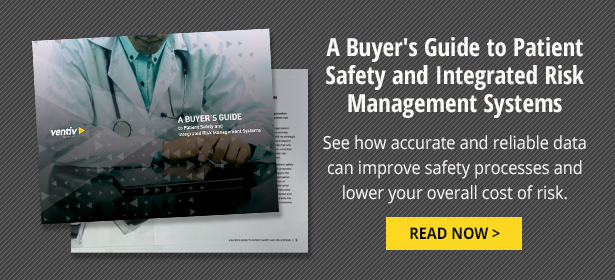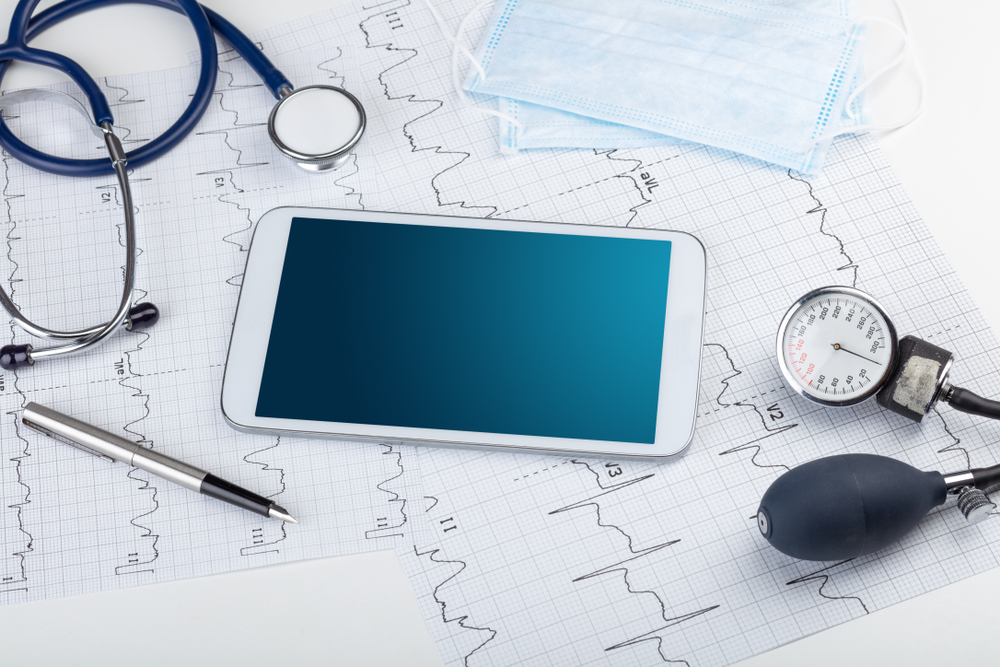Published in Electronic Health Reporter, September 4th 2020.
By Heather Annolino, senior director healthcare practice, Ventiv.
In recent weeks the U.S. has experienced a significant increase in new COVID-19 cases. For healthcare facilities in these regions, this is a constant reminder that things are “not business as normal” and has resulted in administrators needing to continually monitor the changing COVID-19 response landscape to reduce risks which could affect the quality of patient care.
With this in mind, patient safety is more important than ever. The ability for healthcare organizations to implement predictive risk analysis software and data-discovery tools that identify hidden patterns and trends is essential. This allows them to focus on interventions and changes in processes, detect vulnerabilities, and increase preparedness before, during and after an incident to further decrease patient harm.
Moving forward, healthcare organizations must embrace a heightened level of risk management to provide an environment free from harm. These new risks, along with gaps in longstanding processes, require better risk management and patient safety systems with the ability to capture, track, and analyze data in real-time to enhance processes that will mitigate future risks.
Working as a centralized reporting tool, these systems can also remove any biases to assist with making enhanced decisions to continually drive operational efficiencies.
Here are three system requirements for an effective, integrated patient safety tool needed for healthcare leaders to elevate care, enhance quality and reduce risk throughout different phases of the pandemic.
- Advanced Analytics – Through the use of AI and predictive analytics, healthcare organizations can take big, seemingly random data sets and organize them to uncover hidden patterns and trends (data discovery). The data is then converted into actionable insights based on fact-based queries to identify trends which aren’t influenced by any personal biases. Utilizing AI, patient safety and/or risk management teams can have full insight into key factors before and after the event.
- Event Reporting and Investigation – Without this insight, facilities will have incomplete data sets and be unable to address the root cause of the event. By using a centralized event reporting and investigation tool, healthcare facilities can quickly and easily report incidents in the proper manner, while empowering healthcare organizations to better understand patient safety events, improve the patient experience, and elevate the facility’s patient safety culture.
- Root Cause Analysis and Action Planning – Explores and displays the possible causes of a certain event, allowing the investigators and team members to focus on multiple root causes as there are often more than one root cause that leads to a single incident. This tool also assists with creating data focused statements and action plans based upon root causes, contributing factors, medical records, interviews and other key information gathered throughout the investigation. to create a thorough timeline of the event. This improves an organization’s access to information throughout an investigation, as traditionally this information is documented on a whiteboard.
For example, the risks associated with falls at healthcare facilities are high. By using data insights gathered through an integrated patient safety tool, organizations can focus their resources on ways to enhance improvements to reduce falls by predicting the key indicators of the event.
As a result, this will further reduce risks and costs associated with falls. The process begins by identifying the actions which commonly proceed a fall. In this example case, let’s say nearly 44% of the actions are associated with patients traveling to the restroom from their bed. The use of AI further refines the organization’s understanding of the drivers and costs of falls by identifying influences associated with the event. This includes key timing associated with patient falls, and even analyzes free text descriptions from the report entered into the system.
The connectivity of these modules together can assist risk and patient safety managers in creating and applying focused interventions from the event to reduce its occurrence.
To address the “new normal” conditions, organizations must embrace risk management and patient safety solutions which allow them to streamline operations.
Effective technology should break down departmental silos and bring data together to identify opportunities across the continuum of care for improved patient safety measures and response to risks, which are escalated during the uncertain and changing conditions associated with COVID-19.










